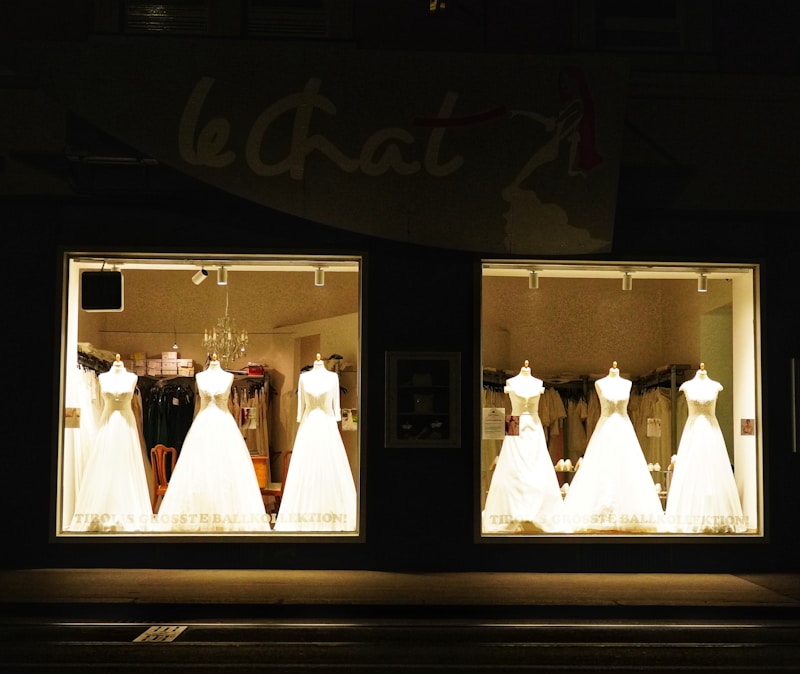Developing a Business Model for Bridal Stores: Strategies for Success
Developing a Business Model for Bridal Stores: Strategies for Success
The bridal industry is a unique segment of the retail market, combining the elements of fashion, emotion, and celebration. In recent years, many entrepreneurs have turned their focus to developing a business model for bridal stores. This article will explore the essential aspects of creating a successful bridal shop, from understanding your target market to managing your inventory effectively.
Understanding the Bridal Market
Before diving into the specifics of developing a business model for bridal stores, it is crucial to understand the dynamics of the bridal market. The demand for bridal products and services often fluctuates based on seasonal trends, wedding dates, and social influences. According to various industry reports, the global wedding market is projected to grow significantly, reflecting a rise in disposable income and a growing desire for unique wedding experiences among couples.
Target Market Analysis
Identifying your target market is a fundamental step in developing a business model. Bridal stores typically cater to brides-to-be, bridesmaids, and sometimes mothers of the couple. Additionally, you'll want to consider factors like demographics, geographic locations, and buying behaviors.
| Demographic | Details |
| Age | Primarily women aged 20-35 |
| Income Level | Middle to upper-middle class |
| Location | Urban areas, often near venues |
Understanding your customers' desires—whether they prioritize luxury, inclusivity, or sustainability—will help you tailor your offerings effectively.
Types of Bridal Stores
Bridal stores come in various formats, including standalone boutiques, online retailers, and pop-up shops. Each format has its advantages and disadvantages.
Standalone Bridal Boutique
This traditional model often provides a tailored experience for brides, featuring exclusive designer collections and offering personalized fittings. However, it requires significant overhead costs for renting a location and maintaining inventory.
Online Bridal Shop
With the growth of e-commerce, many brides are turning to online shopping for convenience. An online bridal store eliminates the costs of physical space but requires an excellent digital marketing strategy to attract visitors and convert them into customers.
Pop-Up Stores
Pop-up bridal stores can be an innovative way to test the market without long-term lease commitments. They provide a sense of urgency that can drive sales but may lack the brand loyalty that established shops enjoy.

Business Model Components
A robust business model for a bridal store should encompass several crucial components, including value proposition, revenue streams, customer relationships, and cost structure.
Value Proposition
Your value proposition should clearly articulate what makes your bridal store unique. Consider offering services like customized dresses, exclusive designer collections, or eco-friendly options that will appeal to your target market. Ensure that your value proposition is prominently featured in all marketing efforts.
Revenue Streams
Bridal stores can generate revenue through multiple sources:
- Dress sales (both off-the-rack and custom-made)
- Accessories (veils, shoes, jewelry)
- Alteration services
- Bridal party offerings (dresses for bridesmaids, flower girls)
- Rental services for high-end dresses
Customer Relationships
Building strong relationships with customers is vital in the bridal industry. Strategies may include personalized consultations, loyalty programs for repeat customers, and effective follow-up after purchases.
Cost Structure
Your cost structure will include fixed and variable expenses. Key costs to consider are:
- Lease and utilities for your retail space
- Inventory purchases
- Staff salaries and commissions
- Marketing and advertising expenditures
Marketing Strategies for Bridal Stores
Once you have established your business model, the next step is effective marketing. Here are several strategies that have proven successful in the bridal retail space:
Social Media Marketing
Platforms like Instagram and Pinterest are visually-driven and particularly effective for promoting bridal wear. Share high-quality images, customer testimonials, and behind-the-scenes content to engage your audience.
Collaborations with Wedding Vendors
Partnering with wedding planners, photographers, and venues can create a network of referrals and cross-promotions that can drive business your way.
Email Marketing
Collect email addresses from interested customers and provide them with valuable content, including wedding tips, exclusive offers, and updates on new arrivals.
Challenges and Solutions
Running a bridal store does come with its own set of challenges. These can include inventory management, keeping up with trends, and managing customer expectations.
Inventory Management
To prevent overstocking or stockouts, consider utilizing inventory management software to track sales trends and predict future demand accurately. This can help you make informed purchases and optimize your inventory levels.
Keeping Up with Trends
The bridal fashion industry is constantly evolving. Regularly attending fashion shows and following influential bridal designers can help you stay ahead of trends, ensuring you offer styles that resonate with your customers.
Managing Customer Expectations
The wedding day is a highly emotional event, and managing customer expectations is crucial. Clear communication about timelines, pricing, and customizations can enhance customer satisfaction and minimize misunderstandings.
Conclusion and Recommendations
Developing a successful business model for bridal stores involves understanding your market, defining your unique offerings, and implementing effective marketing strategies. It is essential to be adaptable and responsive to customer needs and market trends.
As a final recommendation, consider conducting regular customer feedback surveys to assess your performance and identify areas for improvement. Stay engaged with your clients and the broader wedding community to ensure your bridal store remains relevant and successful.
In conclusion, a well-thought-out business model, combined with creative marketing and strong customer relationships, can position your bridal store for success in a competitive market. Embrace challenges as opportunities for growth and continuously refine your approach to meet the ever-evolving landscape of the bridal industry.
